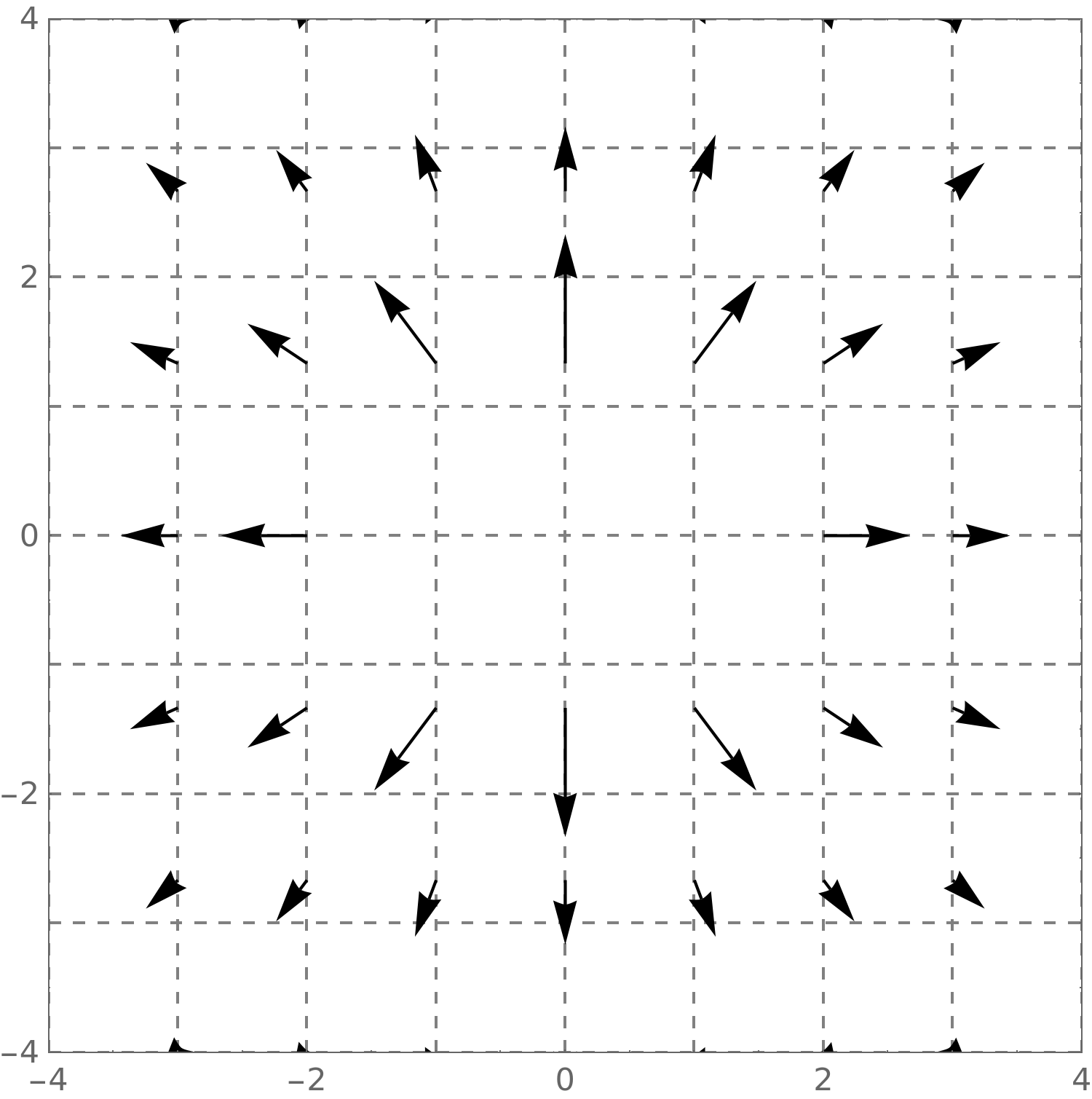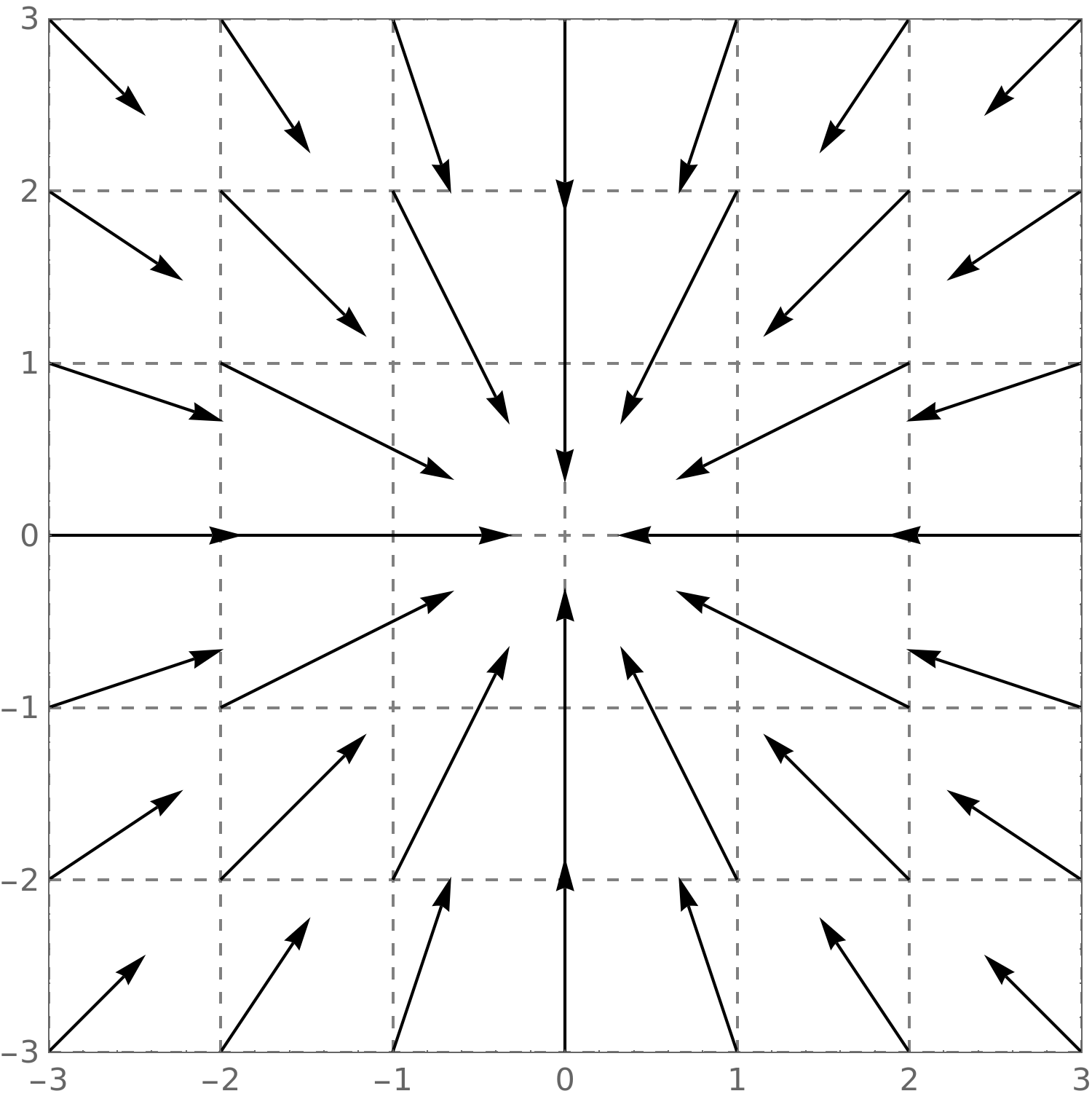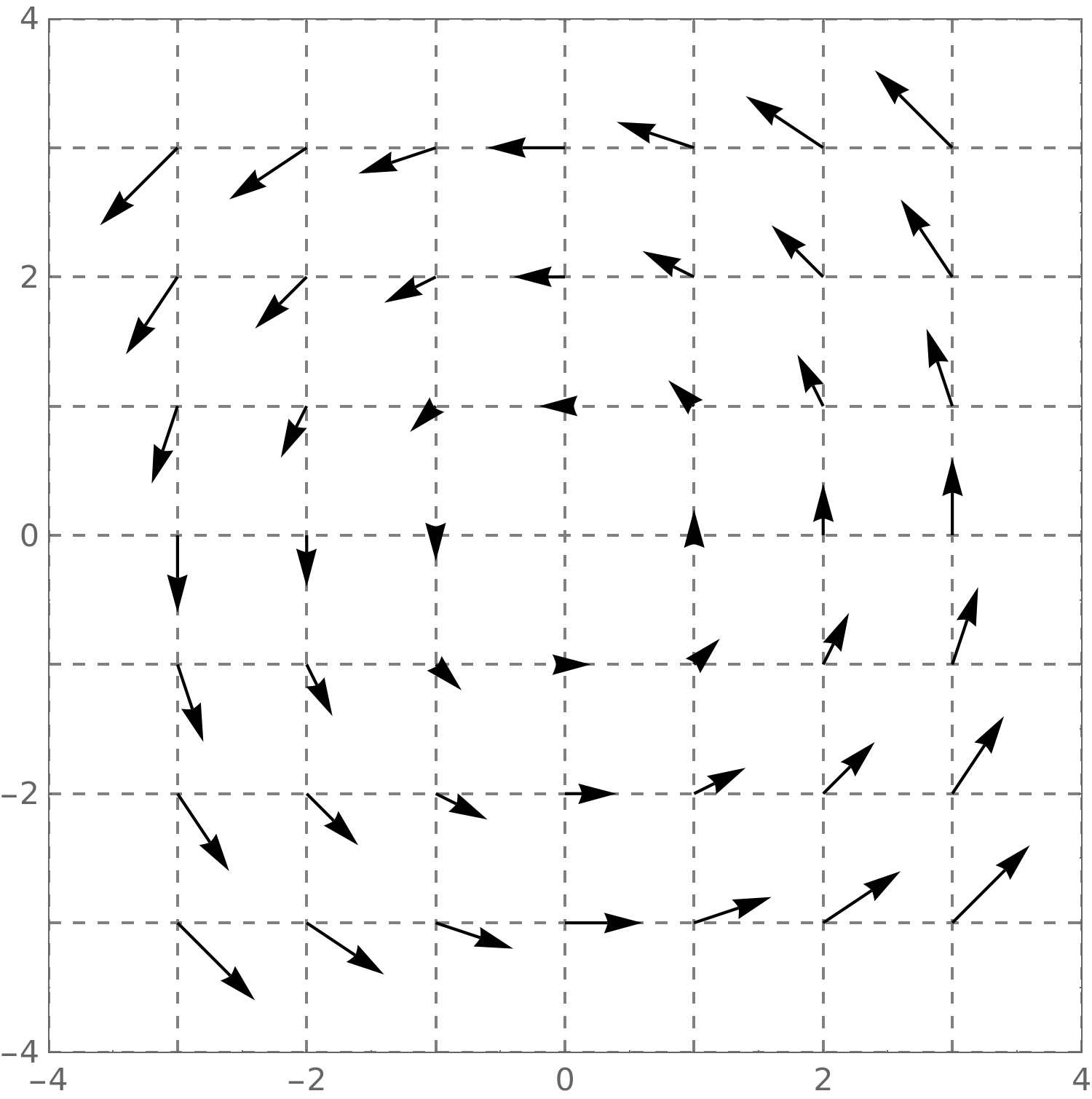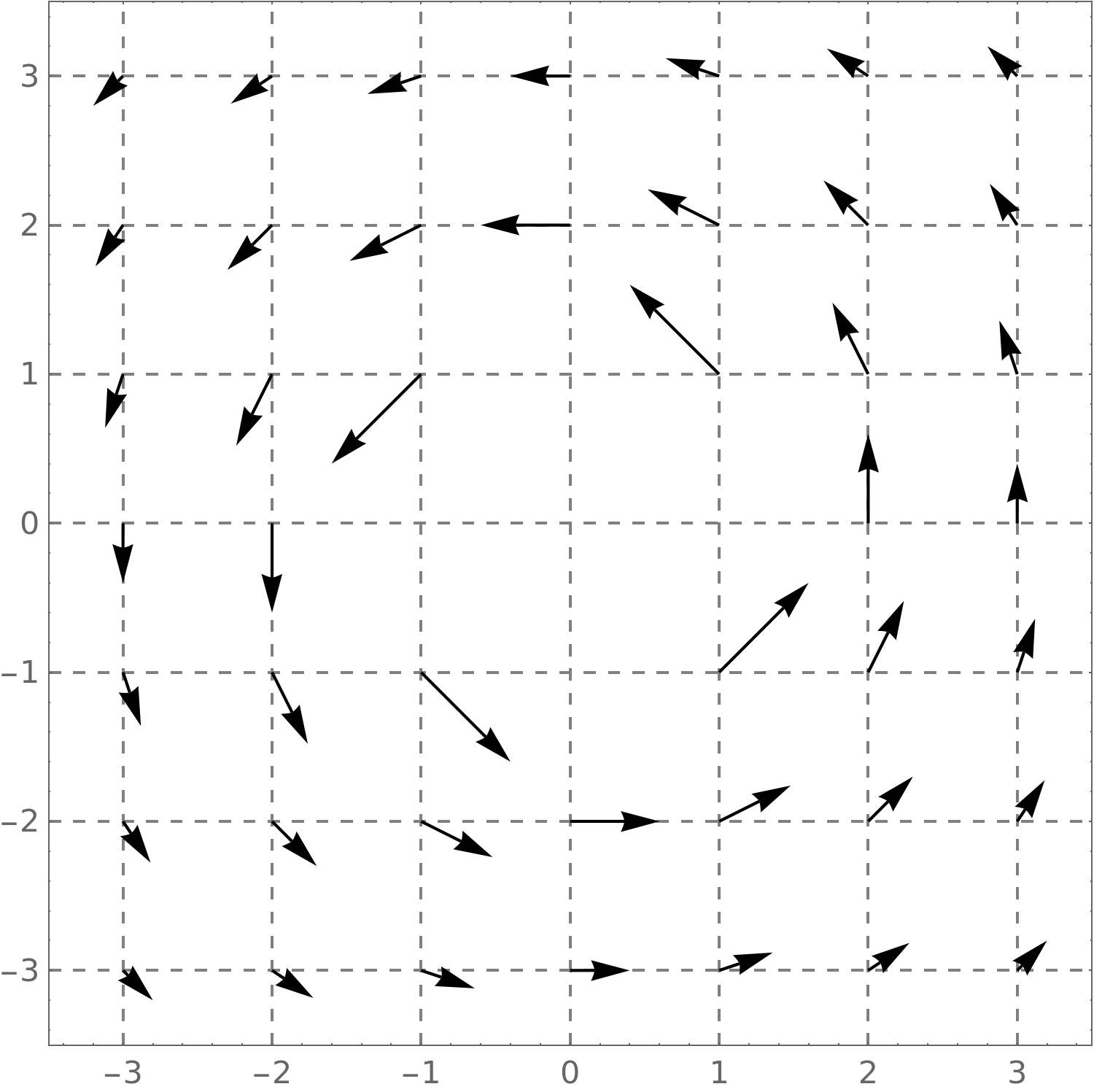We introduce the idea of a vector at every point in space.
Types of functions
When we started on our journey exploring calculus, we investigated functions . Typically, we interpret these functions as being curves in the -plane:
Now we are ready for a new type of function.
Vector fields
Now we will study vector-valued functions of several variables: We interpret these functions as vector fields, meaning for each point in the -plane we have a vector.
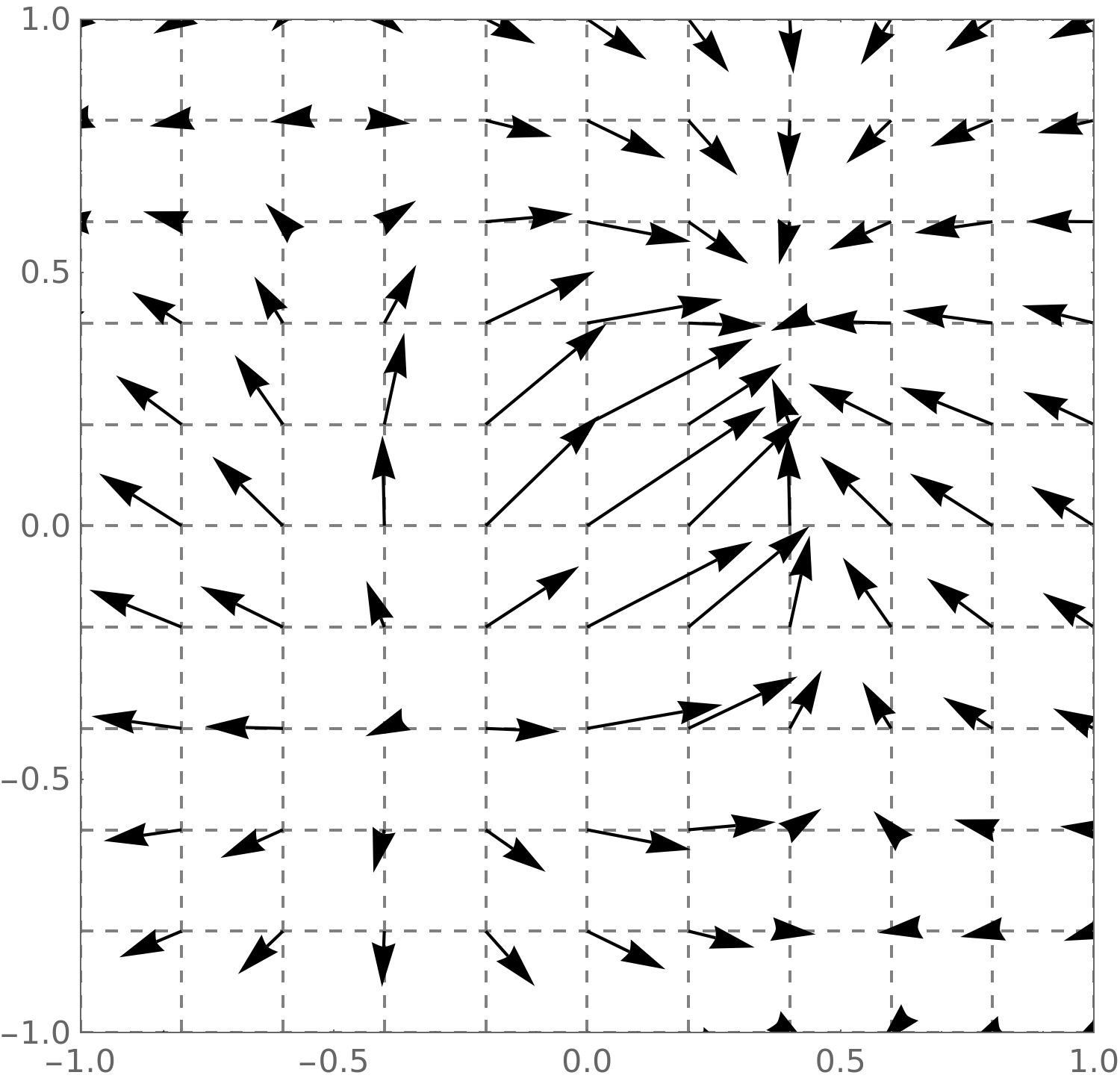
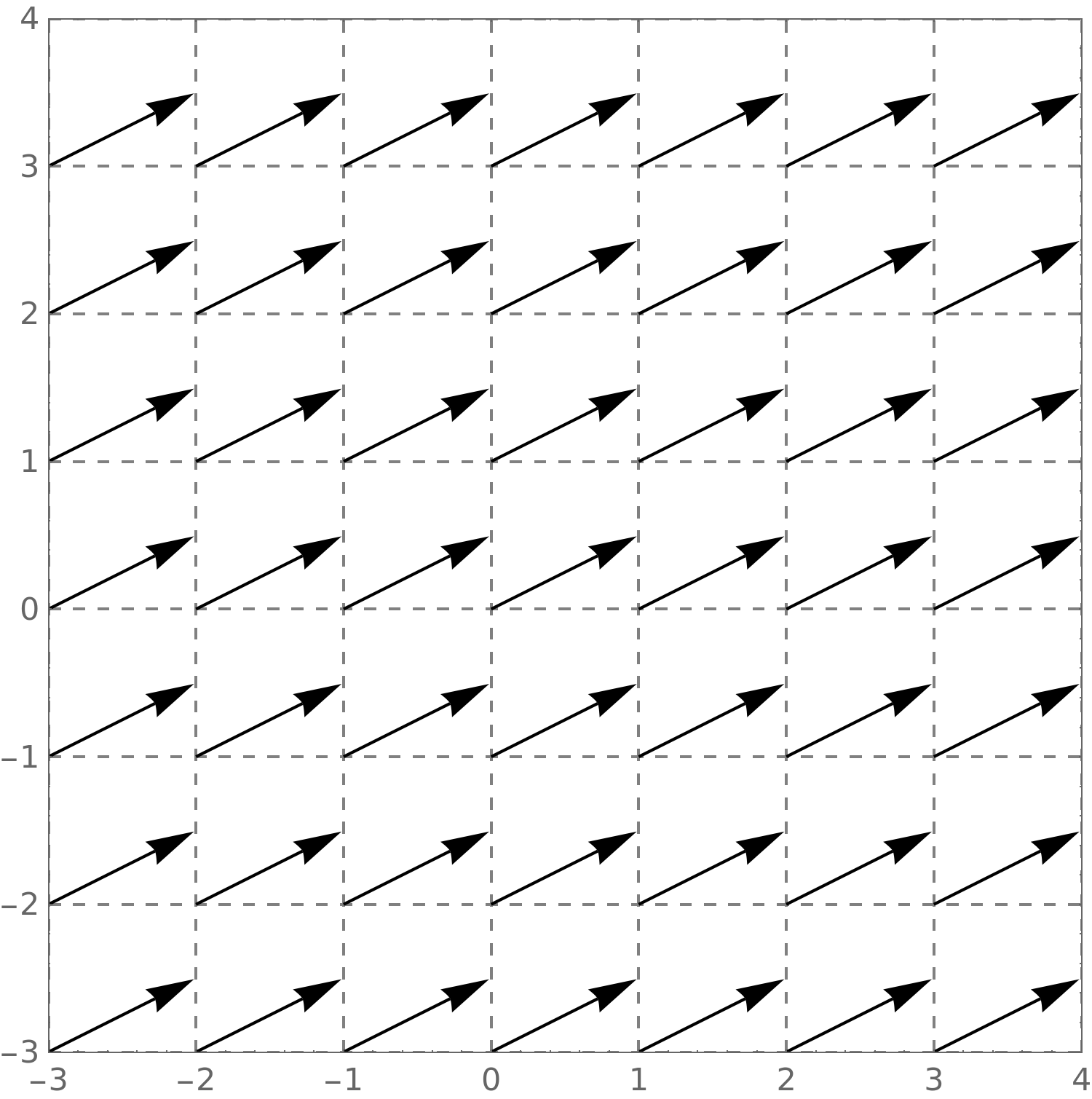
The second choice is not a vector field.
The third choice is not a vector field.
The fourth choice is a constant vector field, and is the correct answer.
Properties of vector fields
As we will see in the chapters to come, there are two important qualities of vector fields that we are usually on the look-out for. The first is rotation and the second is expansion. In the sections to come, we will make precise what we mean by rotation and expansion. In this section we simply seek to make you aware that these are the fundamental properties of vector fields.
Radial fields
Very loosely speaking a radial field is one where the vectors are all pointing toward a spot, or away from a spot. Let’s see some examples of radial vector fields.
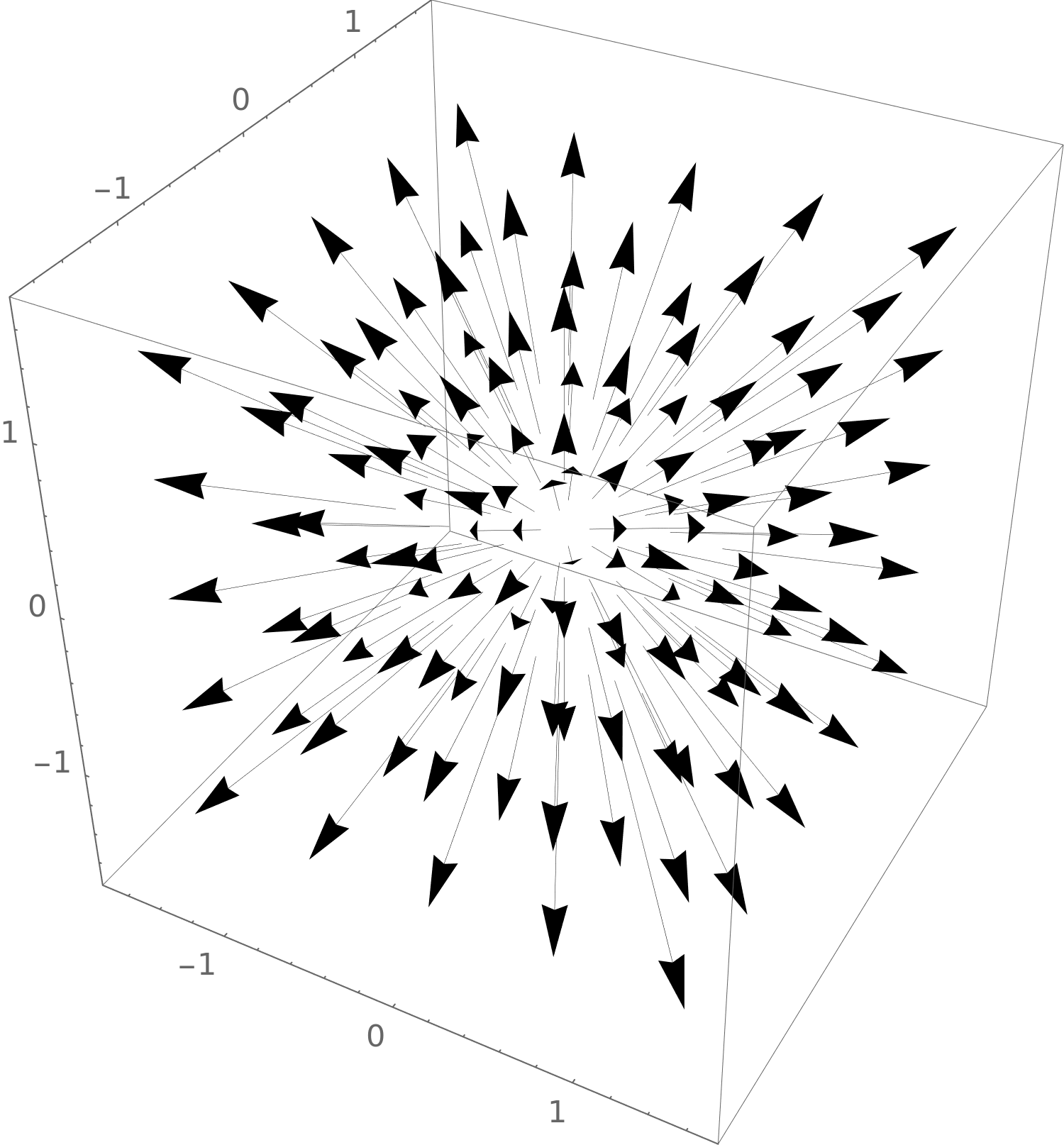
Each of the vector fields above is a radial vector field. Let’s give an explicit definition.
Fun fact: Newton’s law of gravitation defines a radial vector field.
Some fields look like they are expanding and are. Other fields look like the are expanding but they aren’t. In the sections to come, we’re going to use calculus to precisely define what we mean by a field “expanding.” This property will be called divergence.
Rotational fields
Vector fields can easily exhibit what looks like “rotation” to the human eye. Let’s show you a few examples.
At this point, we’re going to give some “spoilers.” It turns out that from a local perspective, meaning looking at points very very close to each other, only the first example exhibits “rotation.” While the second example looks like it is “rotating,” as we will see, it does not exhibit “local rotation.” Moreover, in future sections we will see that rotation (even local rotation) in three-dimensional space must always happen around some “axis” like this:
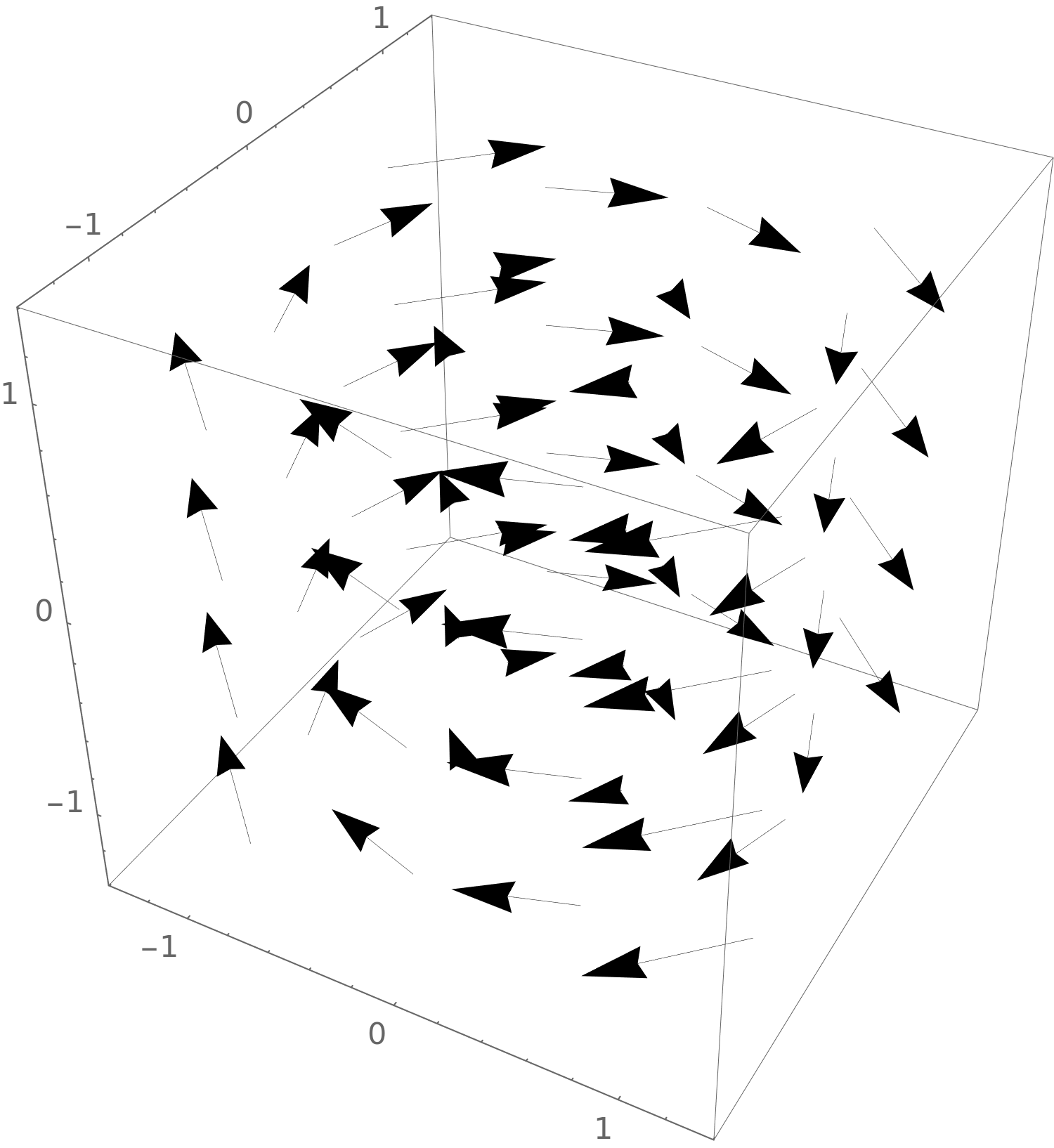
Gradient fields
In this final section, we will talk about fields that arise as the gradient of some differentiable function. As we will see in future sections, these are some of the nicest vector fields to work with mathematically.
Let’s take a look at a gradient field.
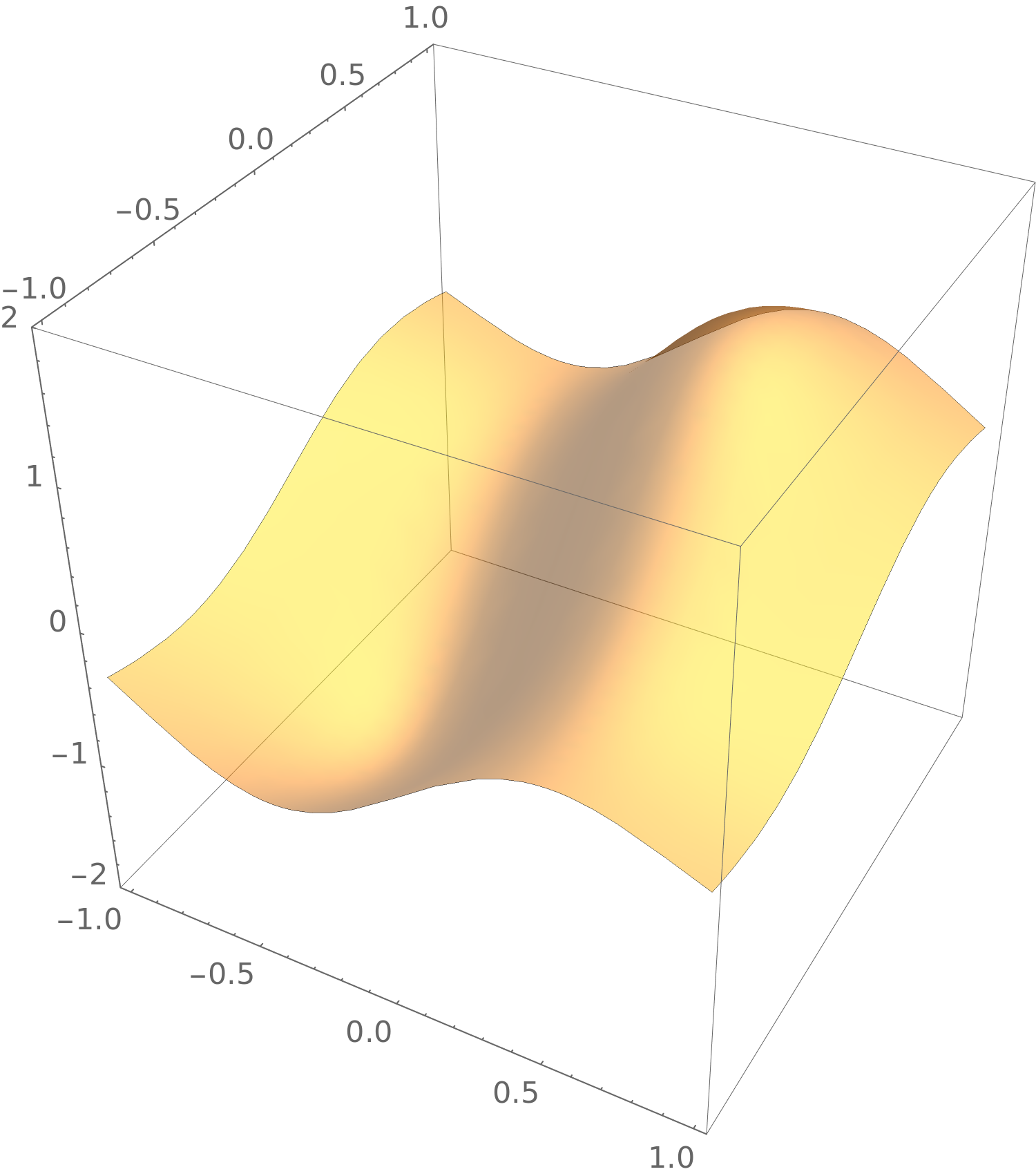
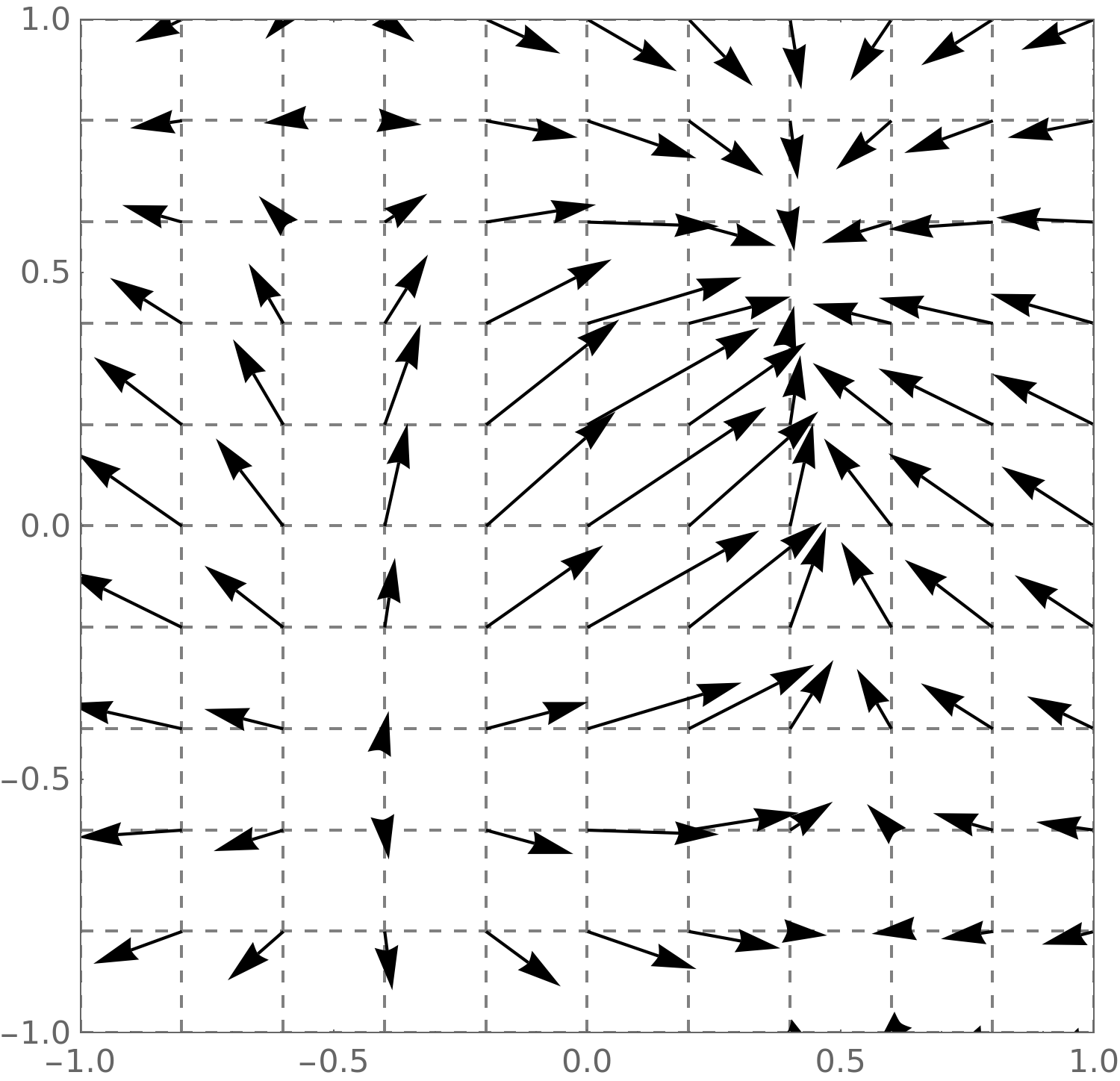
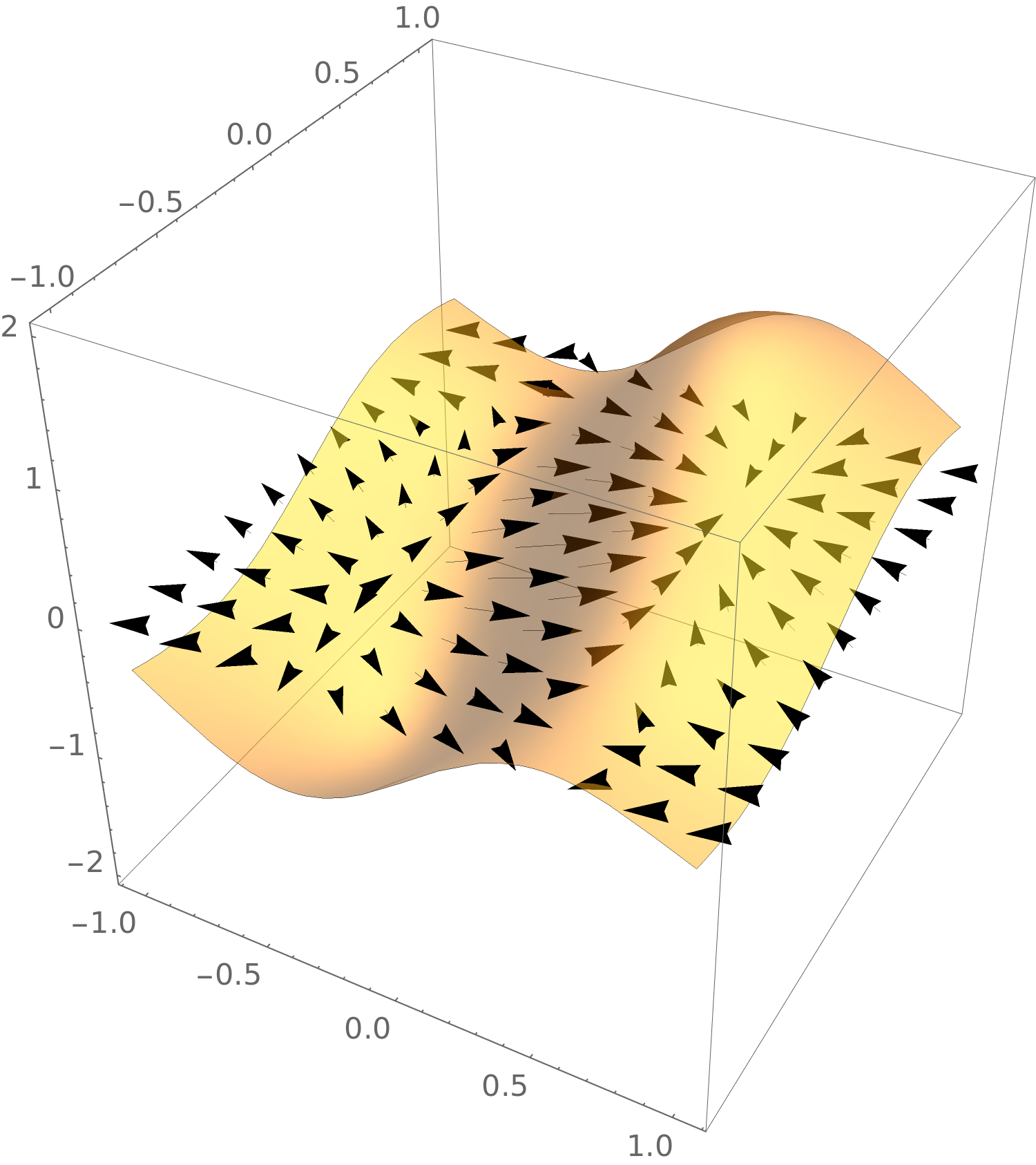
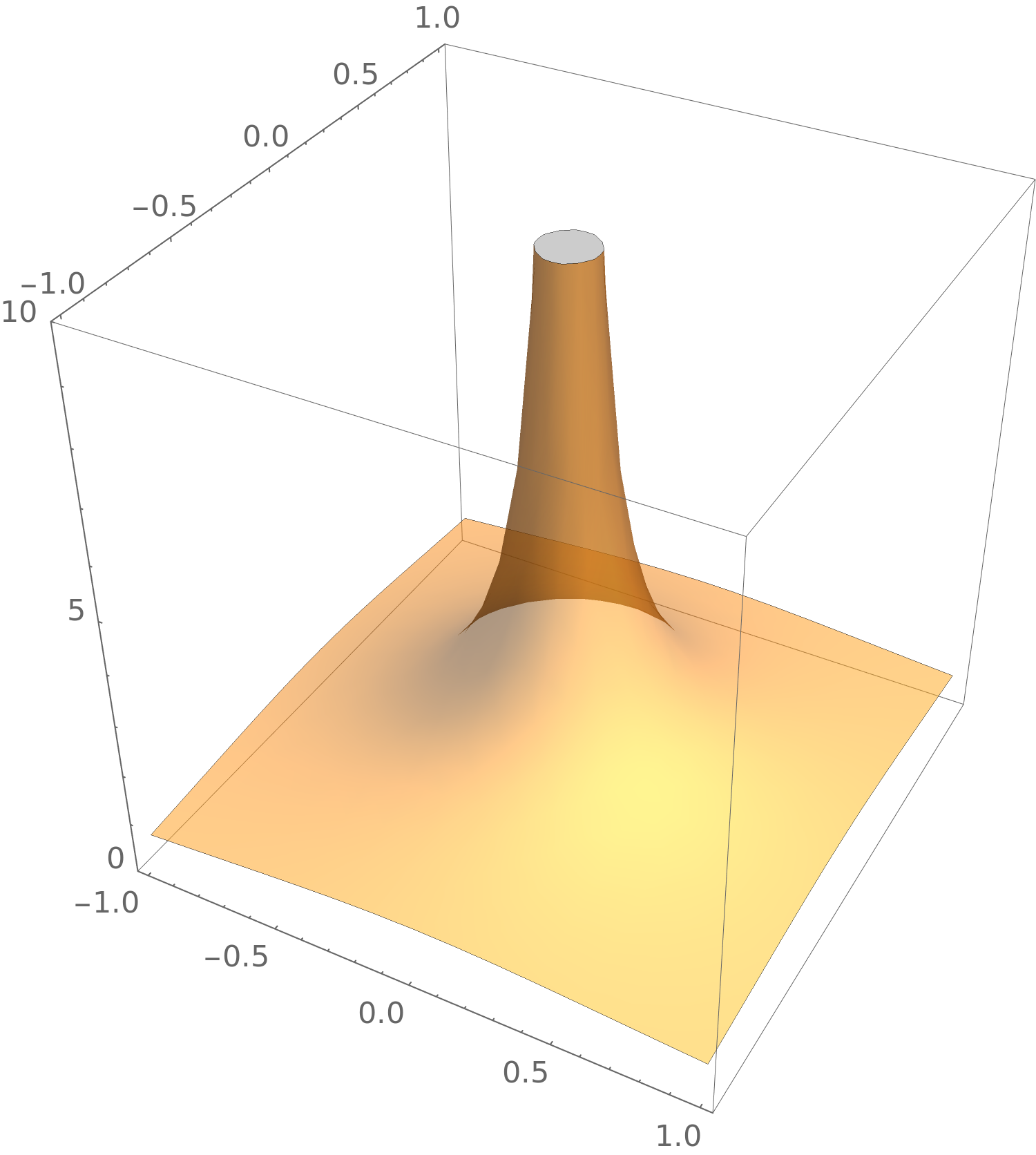
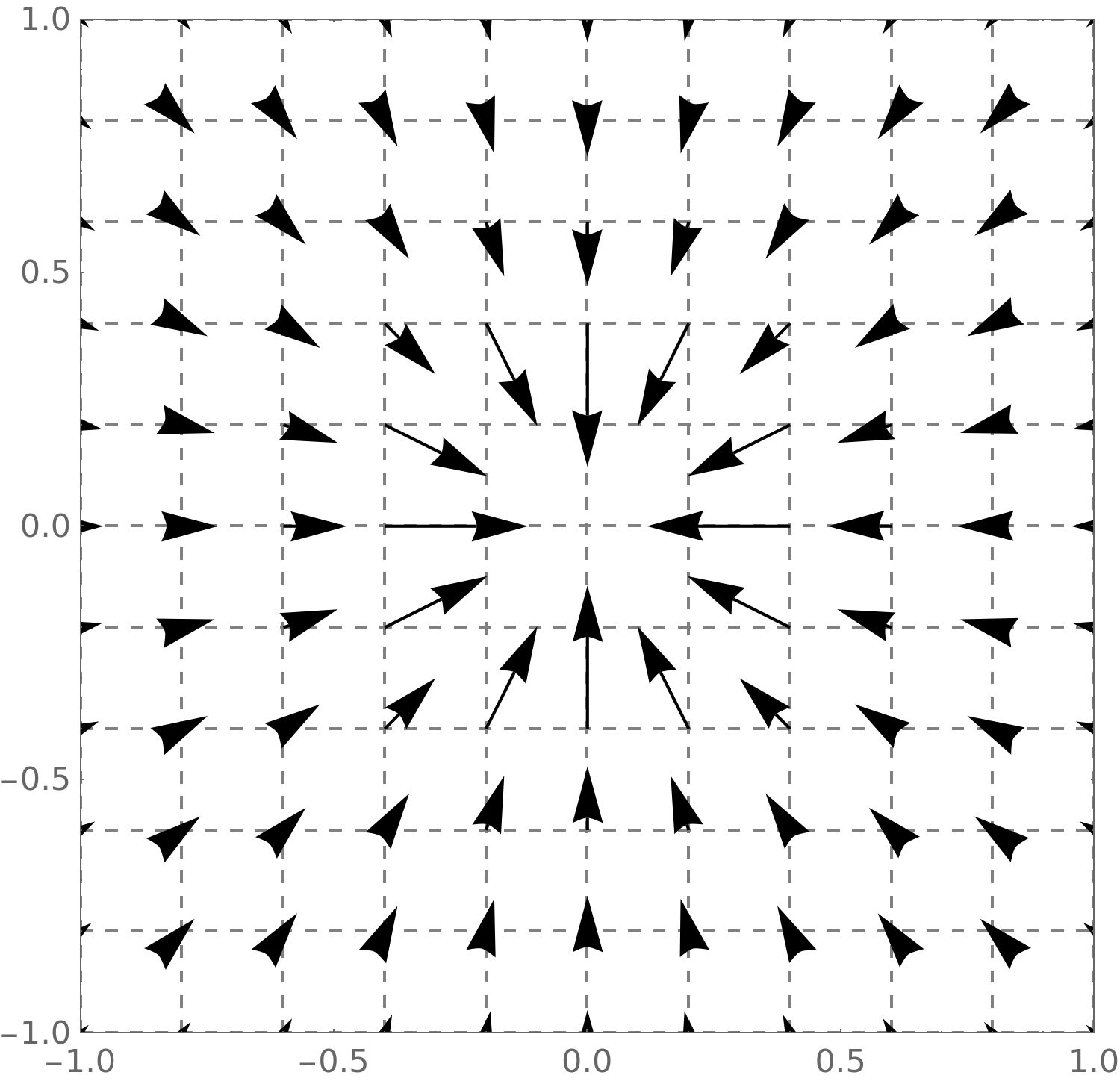
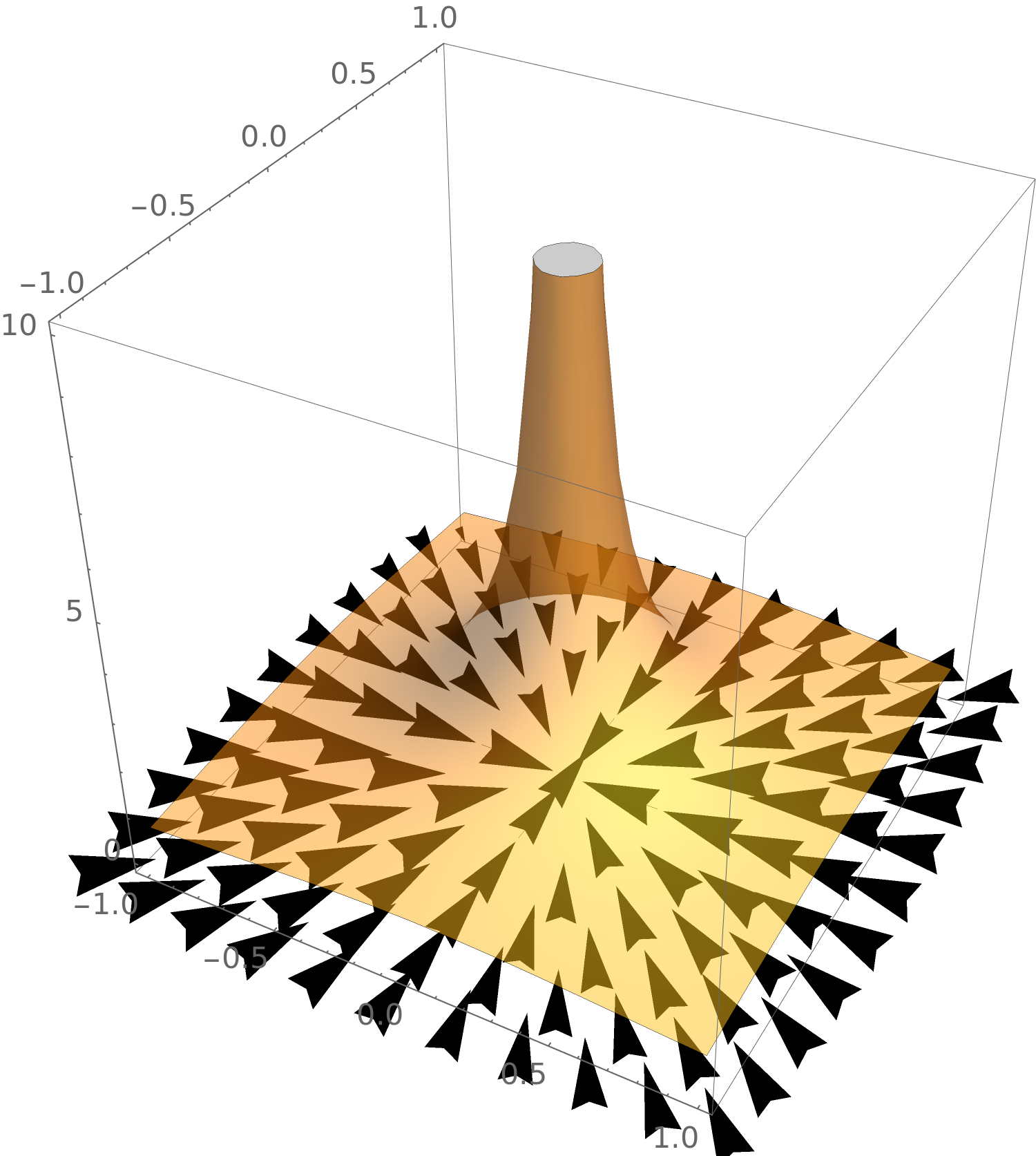
The shape of things to come
Now we present the beginning of a big idea. By the end of this course, we hope to give you a glimpse of “what’s out there.” For this we’re going to need some notation. Think of and as sets of numbers, like or or or .
- is the set of continuous functions from to .
- is the set of differentiable functions from to whose first-derivative is continuous.
- is the set of differentiable functions from to whose first and second derivatives are continuous.
- is the set of differentiable function from to where the first th derivatives are continuous.
- is the set of differentiable functions from to where all of the derivatives are continuous.
Here is a deep idea:
The gradient turns functions of several variables into vector fields.
We can write this with our new notation as:
The Clairaut gradient test
Now we give a method to determine if a field is a gradient field.
And so
And so we see , and thus is a gradient field. Now let’s try to find a potential function. To do this, we’ll antidifferentiate—in essence we want to “undo” the gradient. Write with me:
where is a function of . In a similar way:
We need to make this happen, we set and . From this we find our potential function is .
Now try your hand at these questions:
